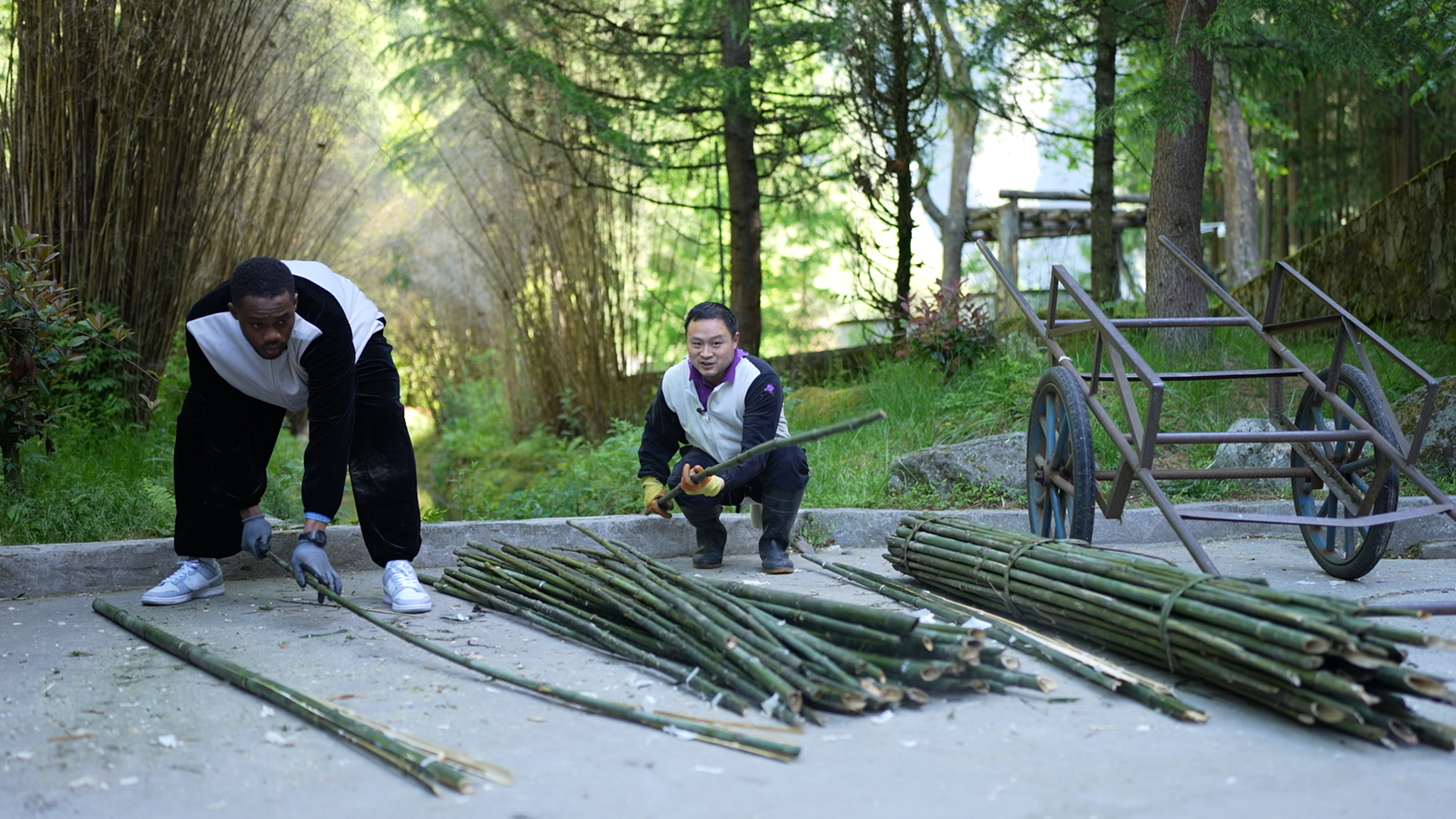12:40

On June 26, a new media program named "YueJian: Discovering China - Sichuan" under the brand of "Chinese Rising Star," jointly organized by the Center for Language Education and Cooperation of the Ministry of Education and China Media Group Mobile, was officially launched. Three guests were invited to visit China Conservation and Research Center for Giant Panda in southwest China's Sichuan Province, where they learned about how pandas have their feralization trainings and behave more like real wild animals, and about their lives in the wild.
Wolong National Nature Reserve, one of the nature reserves established in China for promoting the survival and reproduction of endangered species and protecting their habitats, is a national comprehensive nature reserve and a home to pandas as well as other rare wild animals and plants. Researchers in Wolong National Nature Reserve are devoted to solving issues related to low panda reproduction rate, feralization training, and panda mating in the wild.
First thing for a day, to knock bamboos
The first task of Michael Harford, who is from Nigeria, was to prepare breakfast for the mummy panda undergoing the feralization training. Before entering the feralization field, Michael was asked to wear a suit sprayed with pandas' urine to better hide himself from being seen or scented out by pandas. This is done to help pandas become better de-socialized from humans and get prepared for going back to nature. Workers there would knock the thick bamboos for pandas every day to protect pandas’ teeth. In addition, to monitor pandas' health conditions, workers would take excrement samples of pandas every day for laboratory testing of the intestinal flora of pandas. To Michael, these are significant for the conservation of pandas.

Michael Harford (L), who is from Nigeria, learns to prepare bamboos for the giant pandas at the China Conservation and Research Center for Giant Panda in southwest China's Sichuan Province. /CMG
Michael Harford (L), who is from Nigeria, learns to prepare bamboos for the giant pandas at the China Conservation and Research Center for Giant Panda in southwest China's Sichuan Province. /CMG
Ann Christine from Australia was assigned the task to prepare lunch for the panda. During the first phase of feralization training, the mummy panda would take care of her babies on her own. She feeds the babies with breast milk and teach them how to get used to the wild life. To ensure sufficient breast milk for the baby pandas, Ann prepared a delicious and nutritious lunch specially made for the mummy panda, together with carrots, apples and bamboos. Ann learned that pandas with different temperament would eat their foods in different orders. She liked the job of being a panda keeper, and wished that she could do more to help with the feralization of pandas.

Ann Christine (L), who is from Australia, learns to prepare food for the giant pandas at the China Conservation and Research Center for Giant Panda in southwest China's Sichuan Province. /CMG
Ann Christine (L), who is from Australia, learns to prepare food for the giant pandas at the China Conservation and Research Center for Giant Panda in southwest China's Sichuan Province. /CMG
On-site monitoring of pandas in the wild
To understand how to monitor and collect data on pandas living in the wild, David Geary from the UK was invited to go on a mountain walk with workers. He got to know the growing period of bamboos, the main food of pandas, the moments of pandas in the wild, as well as the wide varieties of animals and plants. By placing monitors on the panda, researchers can better locate a certain panda, learn about the environment the panda is in, and help it keep safe. Meanwhile, with the information provided by the monitor, researchers can better track the feralization effect and collect more reliable data on panda feralization. David said that the real-time monitoring is necessary as it can help obtain more data and information, and improve the success rate of panda feralization. He also said that people need to improve their environmental awareness.

David Geary (R), who is from UK, pays a visit to the China Conservation and Research Center for Giant Panda in southwest China's Sichuan Province. /CMG
David Geary (R), who is from UK, pays a visit to the China Conservation and Research Center for Giant Panda in southwest China's Sichuan Province. /CMG
With the efforts of generations of researchers, the techniques on panda fertilization are becoming increasingly mature. The conservation of pandas is now integrated with the protection of pandas and their habitats. The rich S&T achievements and professional research team now serve as a solid basis for the conservation of pandas, which together contribute to the goal of building a beautiful China with a great diversity of plants and animals. To create nicer and better living environment for the human race, we need to provide a more suitable environment and habitats for rare wild animals and plants, promote the harmonious coexistence of humans and the nature, and improve the awareness of the human race on environmental protection.